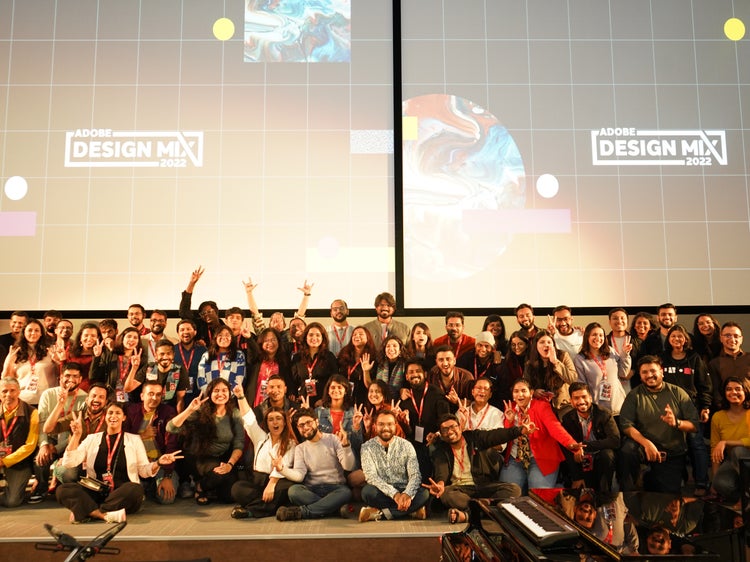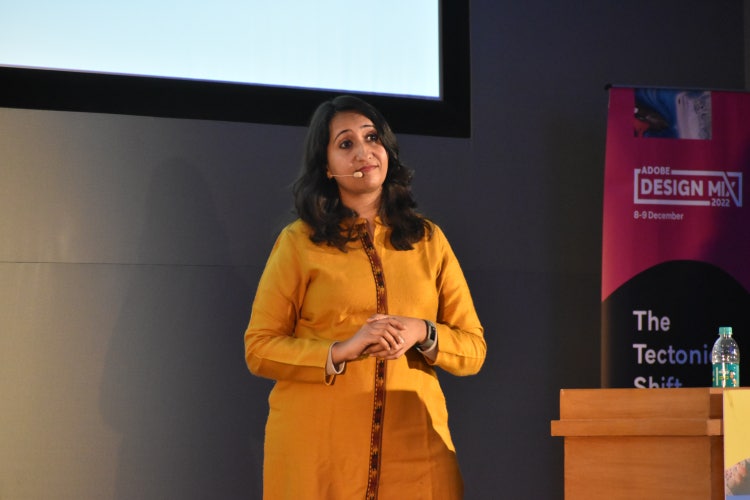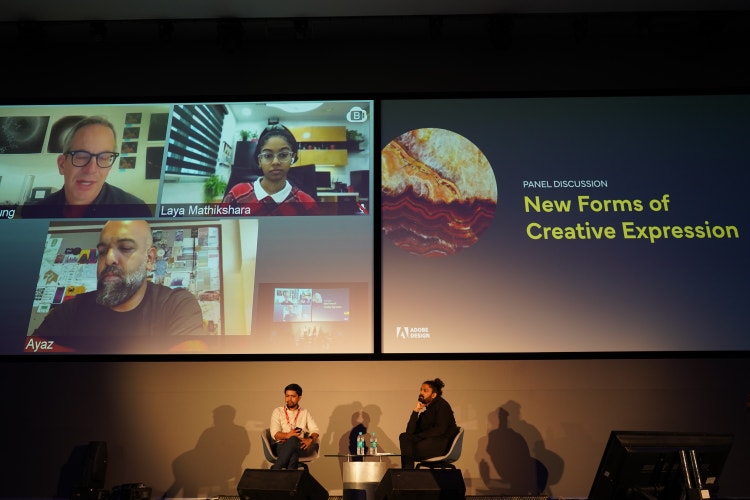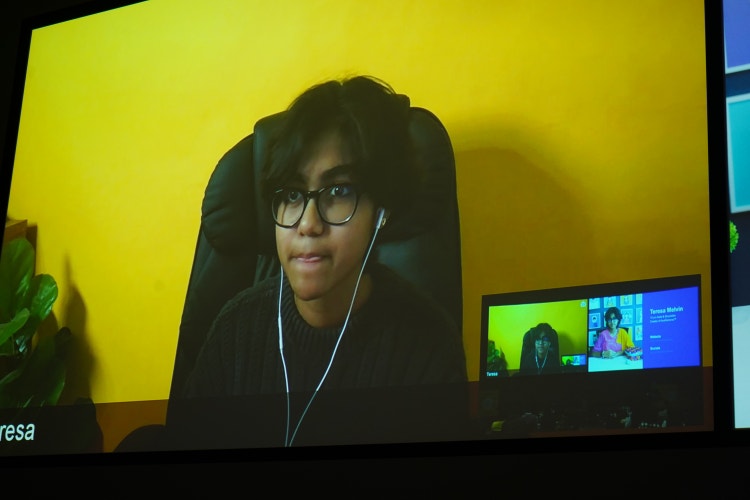Takeaways from Adobe Design Mix 2022
Connections and conversations inside India’s design community

Photography by VRAKSH
This Tectonic Shift was the theme and focus of Adobe Design Mix 2022, the fourth annual two-day opportunity for India’s design community to deliberate and discuss the changing tech and design landscape. I won’t know for a while how the conversations and concepts will show up in my work, but days later I’m still thinking about many of them.
The role of artists and art as catalysts for social discourse

Myna Mukherjee, founder and director of transnational arts and human rights organization Engendered, discussed the continued role of artists as catalysts for societal and social justice discourse. Showing works that ranged from Rochelle Nembhard & Gemma Shepherd’s, Bound (2021) to Puneet Kaushik’s Untitled 2022, she spoke about how art can provoke empathy and shape movements. But it was the unabashed truths about how women’s lives are spent balancing competing professional and personal priorities that stayed with me long after her talk had ended.
AI/ML’s impact on the future of illustration and design

Brooke Hopper, a principal designer at Adobe with a focus on artificial intelligence and machine learning, explored the relationship between AI/ML and creative output. She called attention to the impact of these new technologies on artistic creation, copyright and attribution, and increased opportunities for collaboration and immersive experiences. For good or bad, technological progress has never been reversed, so the only real choice for artificial intelligence and machine learning is to embrace them intentionally and prudently.
A look at gender gaps and bias in urban planning

Who owns space in cities? How many women have the inclination to “hang out” in outdoor spaces? To whom do our public spaces belong at night? With these provocations, Delhi-based architect and activist Swati Janu, founder of Social Design Collaborative, shed light on the deep-seated gender bias of urban planning. The highlight was a personal project focused on speaking with nationals across the gender spectrum from six different states in India. I was struck by the glaring gaps in urban planning as they relate to gender, inclusivity, and safety, and the need for those topics to become driving forces in urban planning’s future.
The future of creative expression

One of the most engaging talks was a panel discussion featuring design, art, and architecture luminaries David Young, Ayaz Basrai, 15-year-old Laya Mathikshara, and Arvind Sanjeev. Their conversations centered around redefining creativity and advocating for new forms of expression with newer technology like AI, NFTs, virtual reality, and quantum computing. After it ended, what remained was the question of whether AI would become just another tool for artists or whether it would require a Turing Test to solemnize the humanness of its artistic creations.
How a young artist is inspiring a generation

Thirteen-year-old NFT artist and storyteller Teresa Melvin detailed an art journey that began at the age of five when her drawings were featured in the movie Bangalore Days. I was moved by the generosity of details about her process (from sketching on paper, to digital sketch, to final painting, and animation), the evolution of her NFTs into the AvaRamona character collection, and how she supports NGOs around the globe with her work. I'm excited for the countless young artists she'll inspire through the adventures she’s taken, and will take, both through and as a result of the characters she’s created.
The sociological implications of co-creating with AI

Urban anthropologist Michiel Baas spoke of agency, autonomy, and the intelligence of humans with respect to AI. He noted the sociological implications of the technology, and how it's being used to further the ultimate human trait of creativity, by pointing to works by Refik Anadol, who used AI to reinterpret MoMA's art collection in Unsupervised (2022); and Fabin Rasheed and Sleeba Paul’s machine learning art and poetry generator Aruia Kathi—An artist in the clouds (2019). But it was when he suggested we think of AI as a creation tool that artists will use to create works that question the nature and existence of AI technology, that I thought about the familiar causality question—Which came first, the chicken or the egg?—and wondered how we would view its impact in the future.